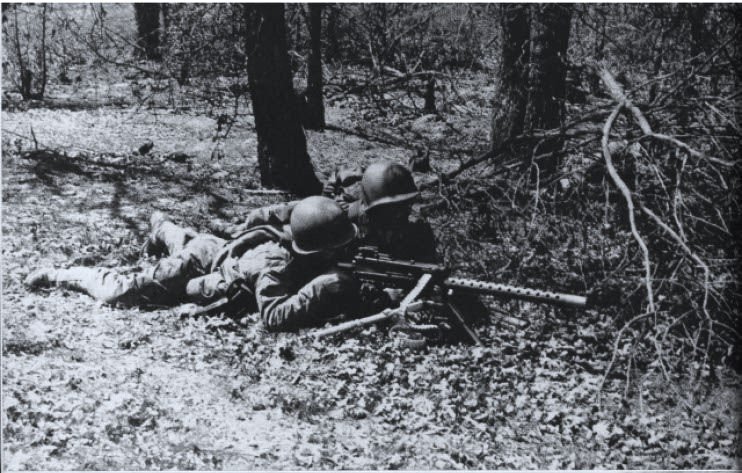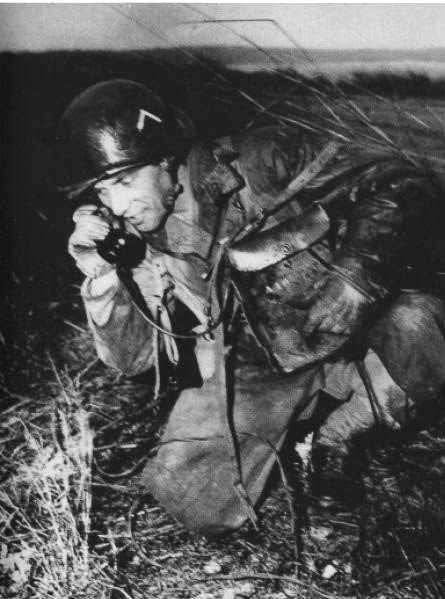
Camp Claiborne
Located in Rapides Parish, Louisiana, Camp Claiborne was created in 1940 for the sole reason to train soldiers for World War II. Over half a million men got their first taste of military operations there in the six years it existed as a training center. Camp Claiborne served as a German prisoner-of-war camp during the latter part of the war. In 1946, the Army returned the land over to the National Forest Service, which integrated the land into Kisatchie National Forest.
In the wake of the beginning of World War II, the U.S. Army which was already increasing in size sought to expand training capacity. As part of this effort, the camps of Claiborne, Livingston and Polk were created in Louisiana, with Camp Claiborne being the renamed expansion of the already existing Camp Evangeline. After activation in 1940, Camp Claiborne was part of the annual Louisiana Maneuvers and would be the site of the creation or reactivation of many divisions throughout the war including the 34th Infantry Division, 82nd Airborne Division and 101st Airborne Division. While at Camp Claiborne, soldiers went through basic training which involved physical training (PT) and drill to familiarize themselves with marching and weapon systems. Once the basic requirements had been met, soldiers then advanced to specialized training for their specific unit needs such as engineer battalions, artillery battalions or infantry regiments.
The 103rd Infantry Division was ordered into active service at Camp Claiborne November 15, 1942. While at Camp Claiborne, the understrength 103rd Infantry Division was supplemented with men from existing divisions such as the 85th Infantry Division in nearby Camp Shelby, Mississippi. These additions were part of the reorganization from square to triangular division structure that led to existing divisions losing an infantry regiment. Men of the 103rd would also come from other camps and induction centers across the country including Camp Grant, Illinois; Fort Custer, Michigan; Fort Leavenworth, Kansas; Camp Dodge, Iowa; Fort Snelling, Minnesota; Fort Bragg, North Carolina; Fort Oglethorpe, Georgia; Fort McPherson, Georgia; Jefferson Barracks, Missouri; and Fort Jackson, South Carolina.
As in most times of peace, most people gave little thought to war and the horrors that a soldier must endure in combat in the years leading up to the attack on Pearl Harbor. The military often suspended training if it was too hot, cold, wet, dusty, or inconvenient. After all, there was no pressing need to force training on soldiers in these conditions. This changed, however, when the United States entered World War II. Little did the soldiers know how bad conditions would get when they deployed into the European Theater of Operations. General George Marshall, Chief of Staff of the Army, knew because of his own combat experience during World War I. When faced with rising criticisms about his views on training, General Marshall responded:
“The business of the soldier, as I have found, involved mud, or extreme heat and irritating dust. It involves missing meals, long marches, bad weather, insects, and discomforts. It involves a great many inconveniences; it interferes with social and sometimes it very seriously affects personal relationships. All of this is inevitable and is part of the life of the soldier.”
Camp Claiborne gave the men of the Cactus Division little quarter during their training. Though they faced rough training, the experience that the soldiers gained would pay off later in a big way. The infantrymen trained in attack, defense, pursuit, and patrol squads, and once they finished running maneuvers, they did it again and again. Gun crews fired their howitzers and learned the fine art of fire planning and execution. Radio Telephone Operators (RTO’s) faced problem after problem with wire and radio communications. Medics went over their aid station procedures, triage, evacuation, and the grim task of identification. Camp Claiborne was also home to the Engineer Unit Training Center which instructed engineers on the tasks of demolition, construction, and repair. In addition to these skills, engineers were also taught basic infantry training as their specialty often required them to be on the front lines. The railroad which connected Camp Claiborne and Camp Polk was utilized by both engineer and railway battalions to practice derailing trains and repairing tracks. The 103rd Infantry Division trained hard because they knew that the backbone of any operation was the ability to communicate. All this extensive training led to unit integrity and ultimately contributed to the strength the Cactus men would need during the grueling battles they would face in Europe.
The 103rd Infantry Division faced a massive test during the Louisiana Maneuvers shortly after their training ended. While it was not the largest event ever held at Camp Claiborne, it was big enough to give the men the confidence they needed to go into battle. The final event of the maneuver consisted of successfully attacking the Sabine River and crossing the stream via engineer bridges. To make conditions worse, many men claimed it was one of the hottest Louisiana summers ever.
On November 15, 1943, the division completed its basic and advanced infantry training at Camp Claiborne. It was ordered to move on to Camp Howze, Texas for additional training.
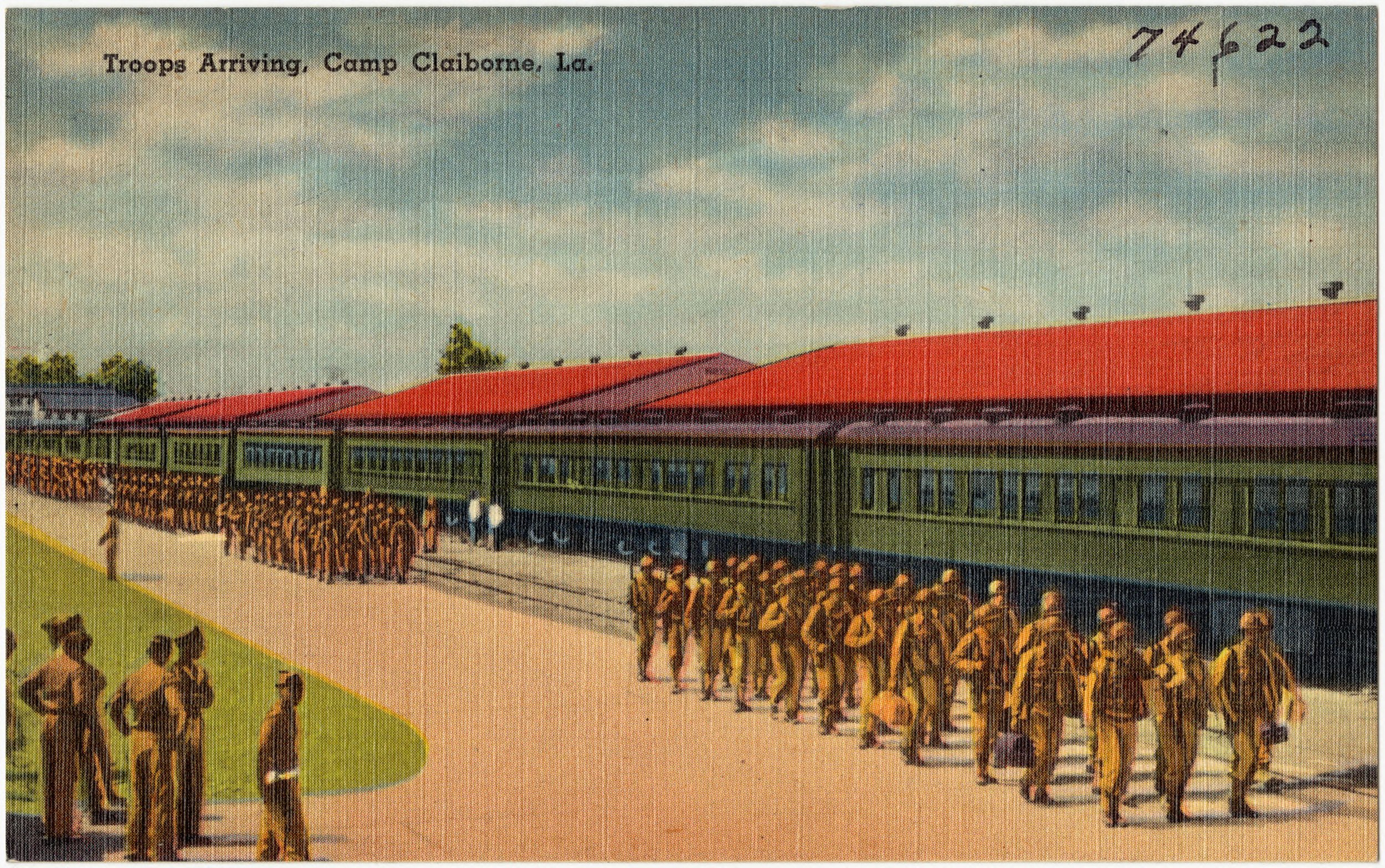
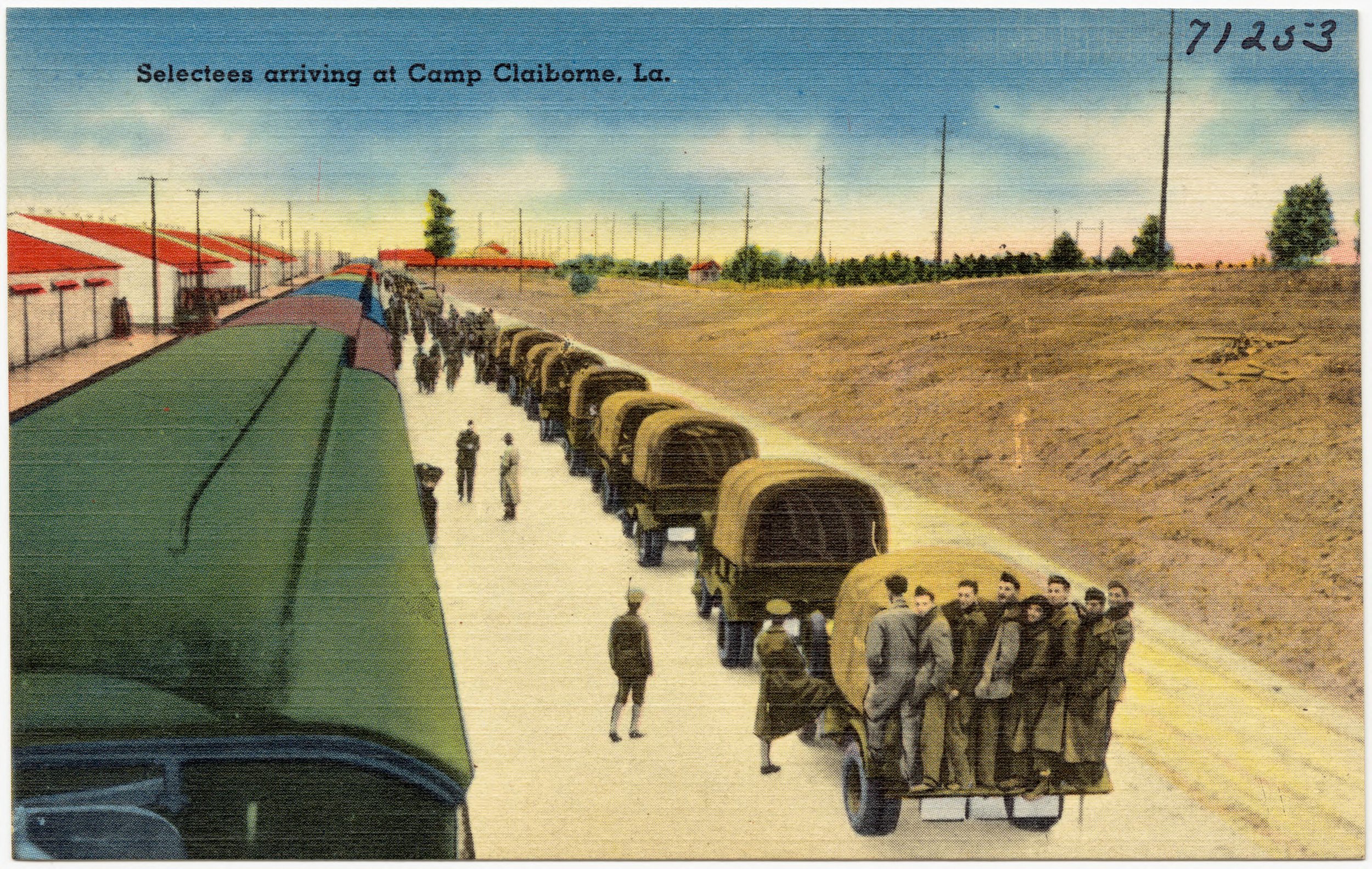

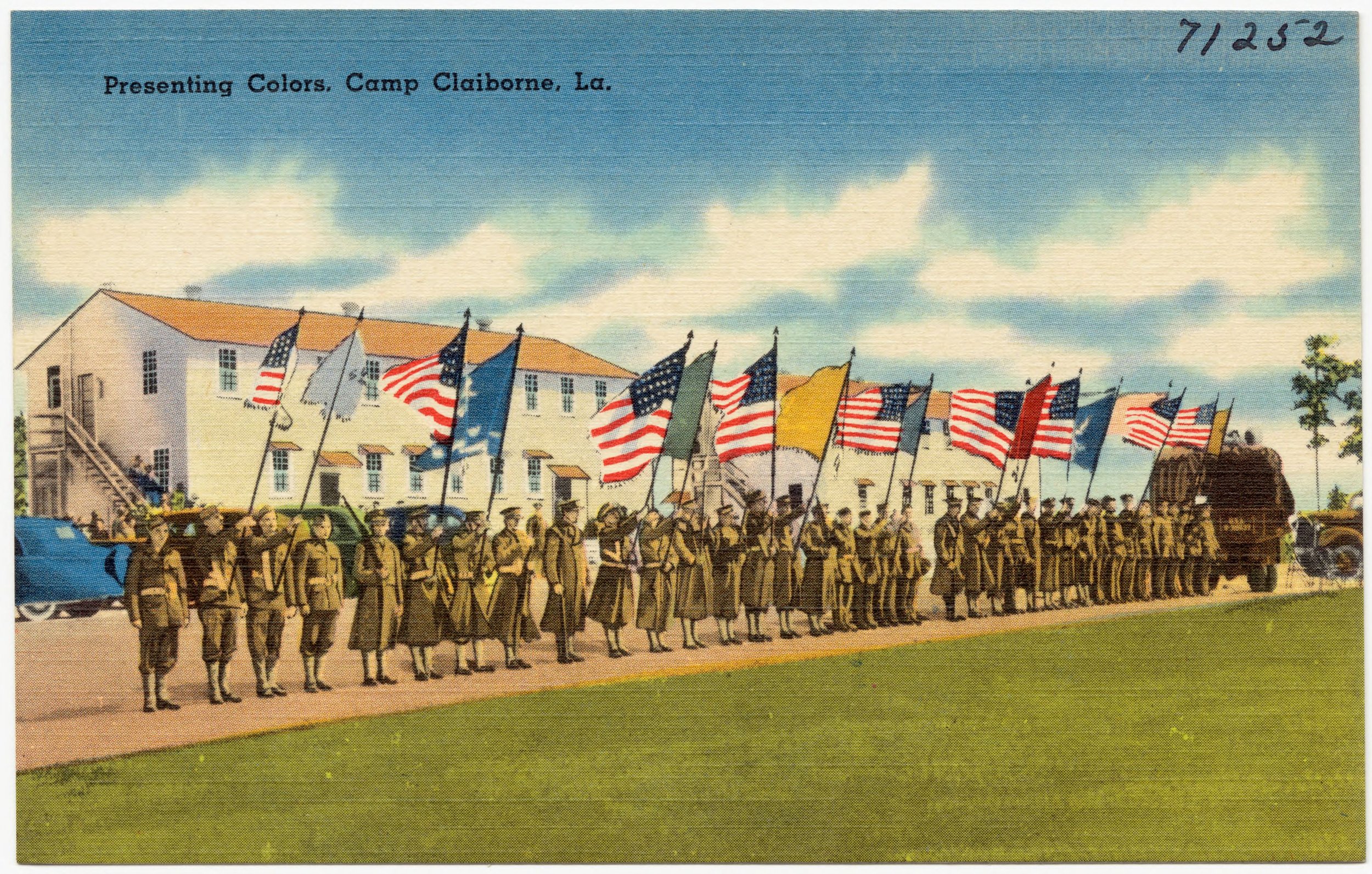
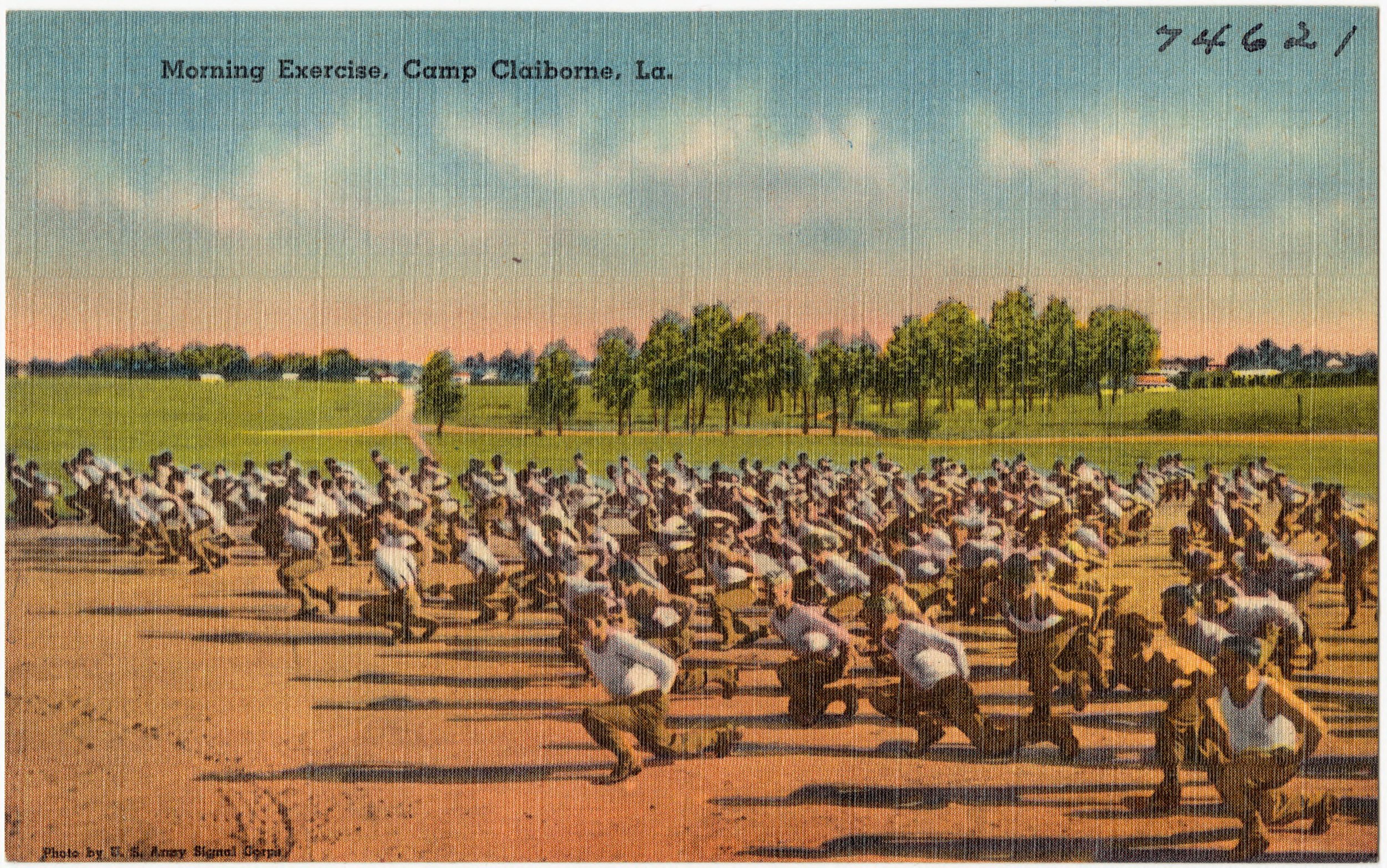
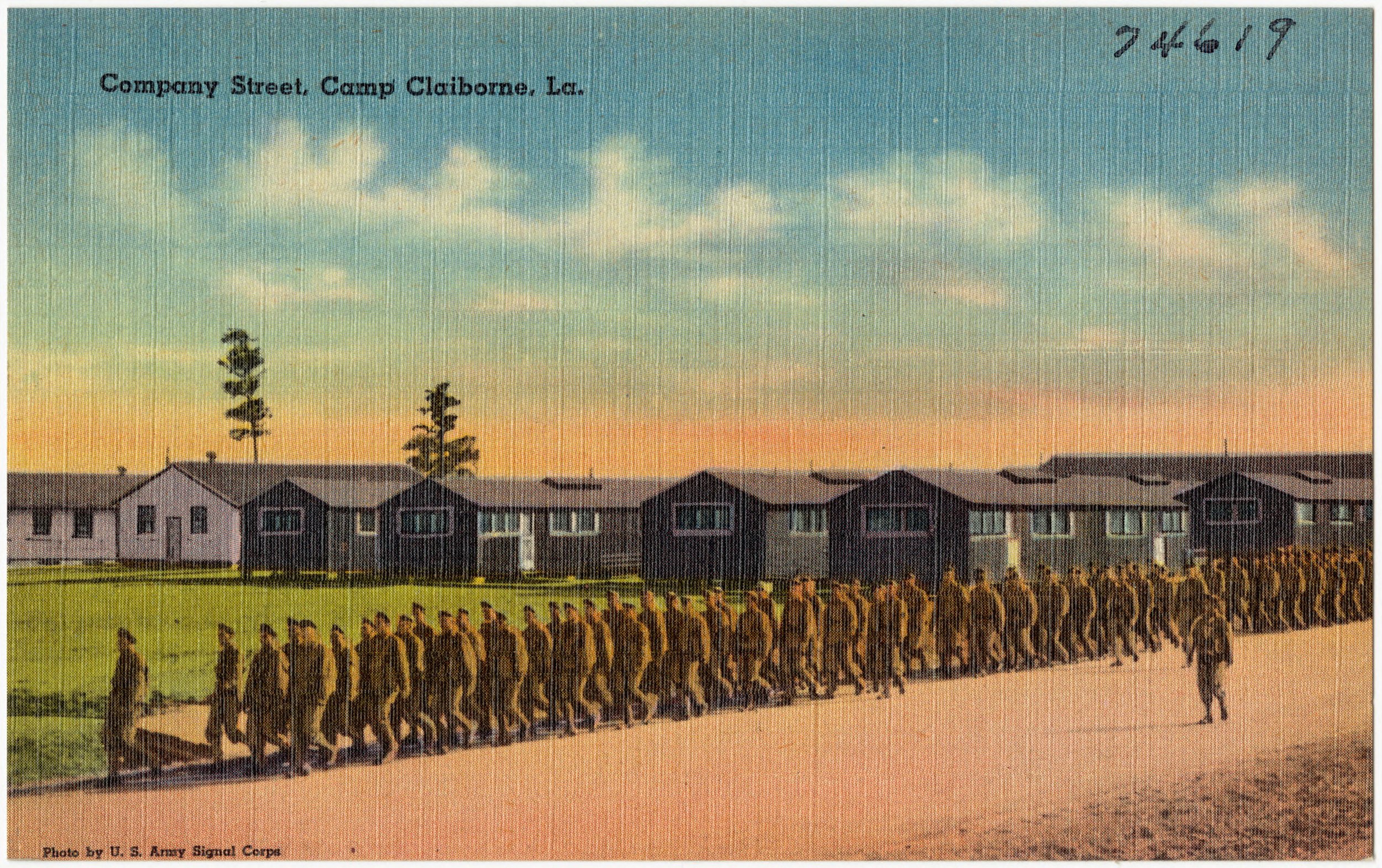
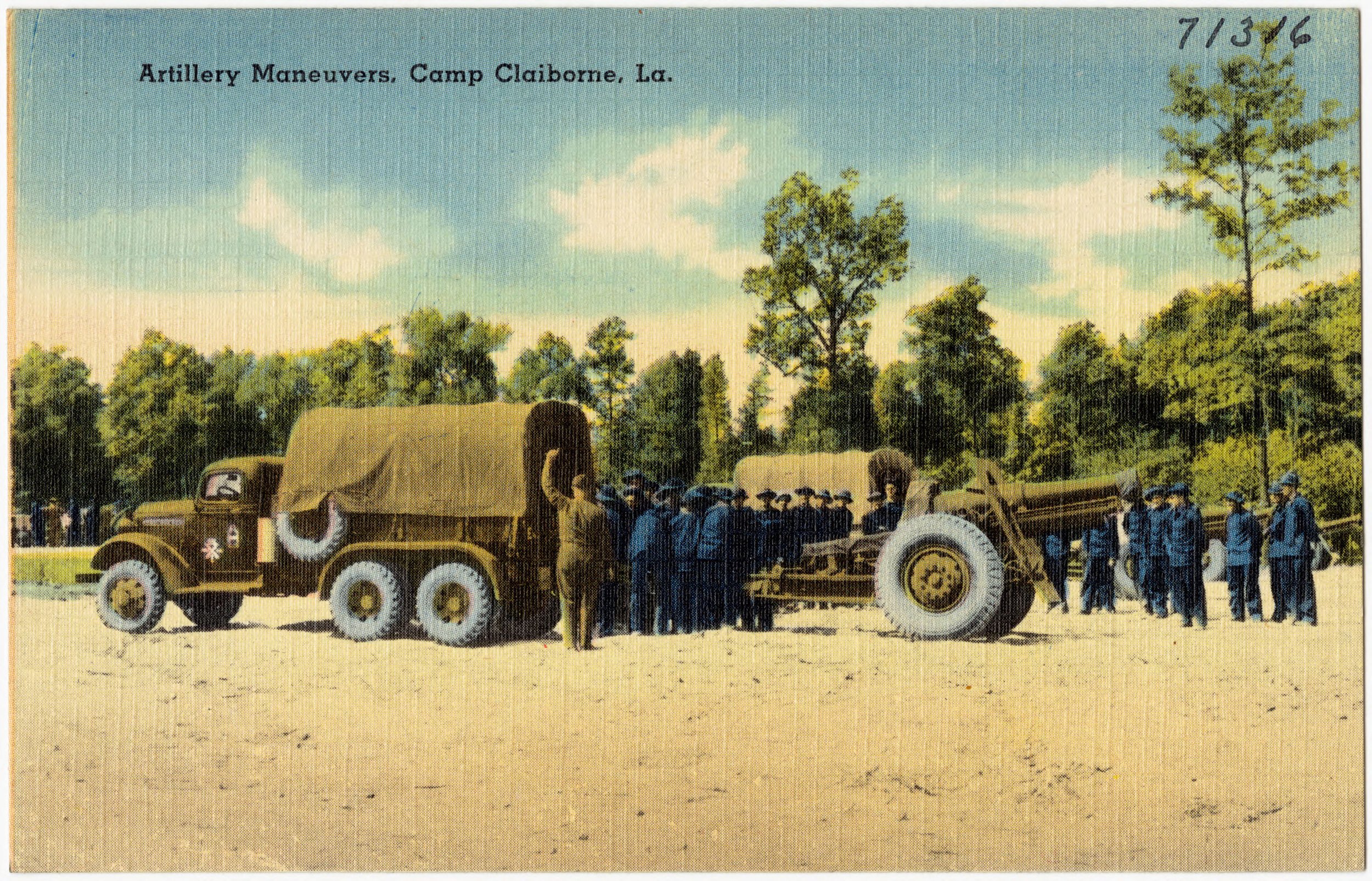
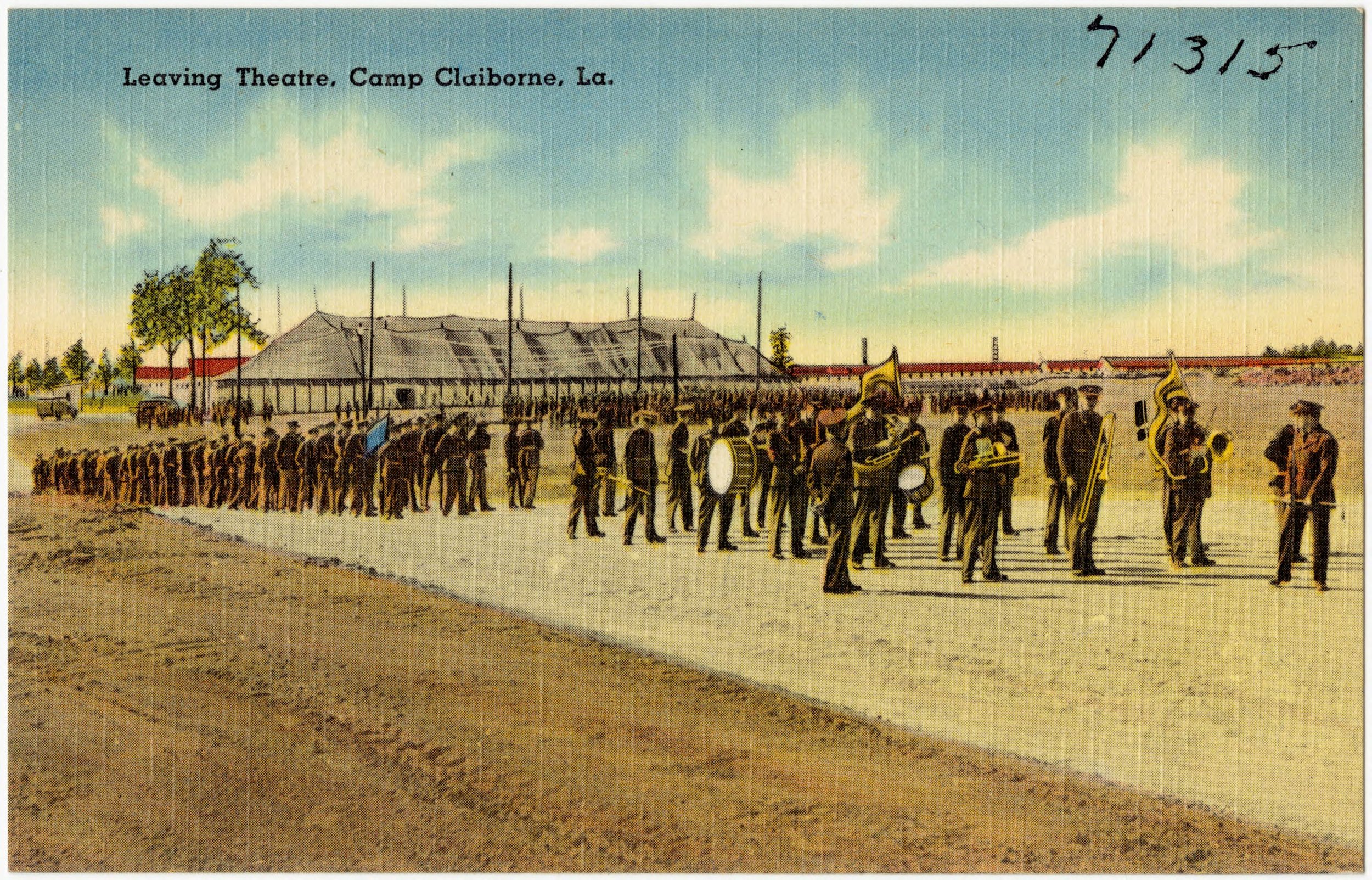
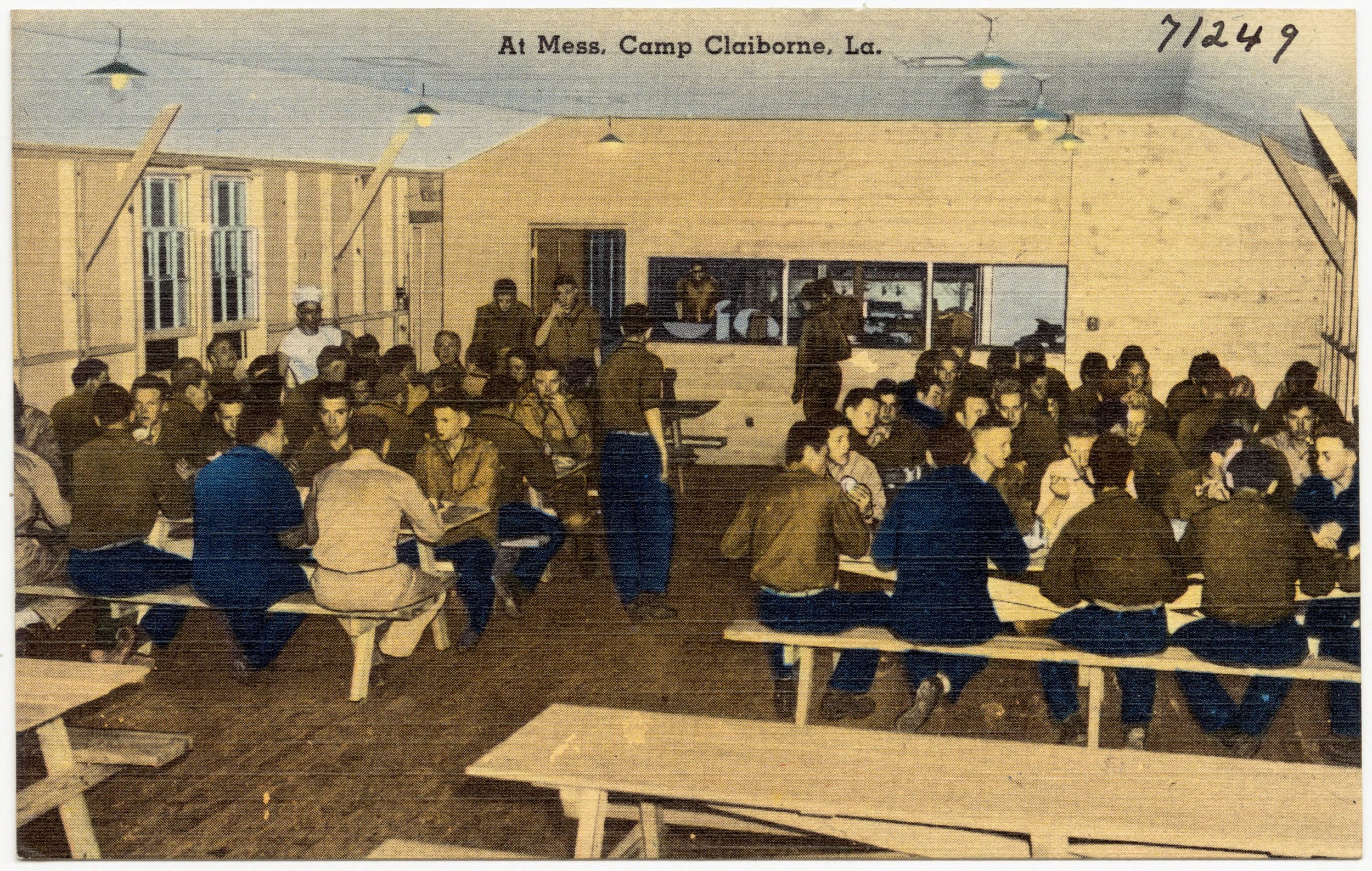

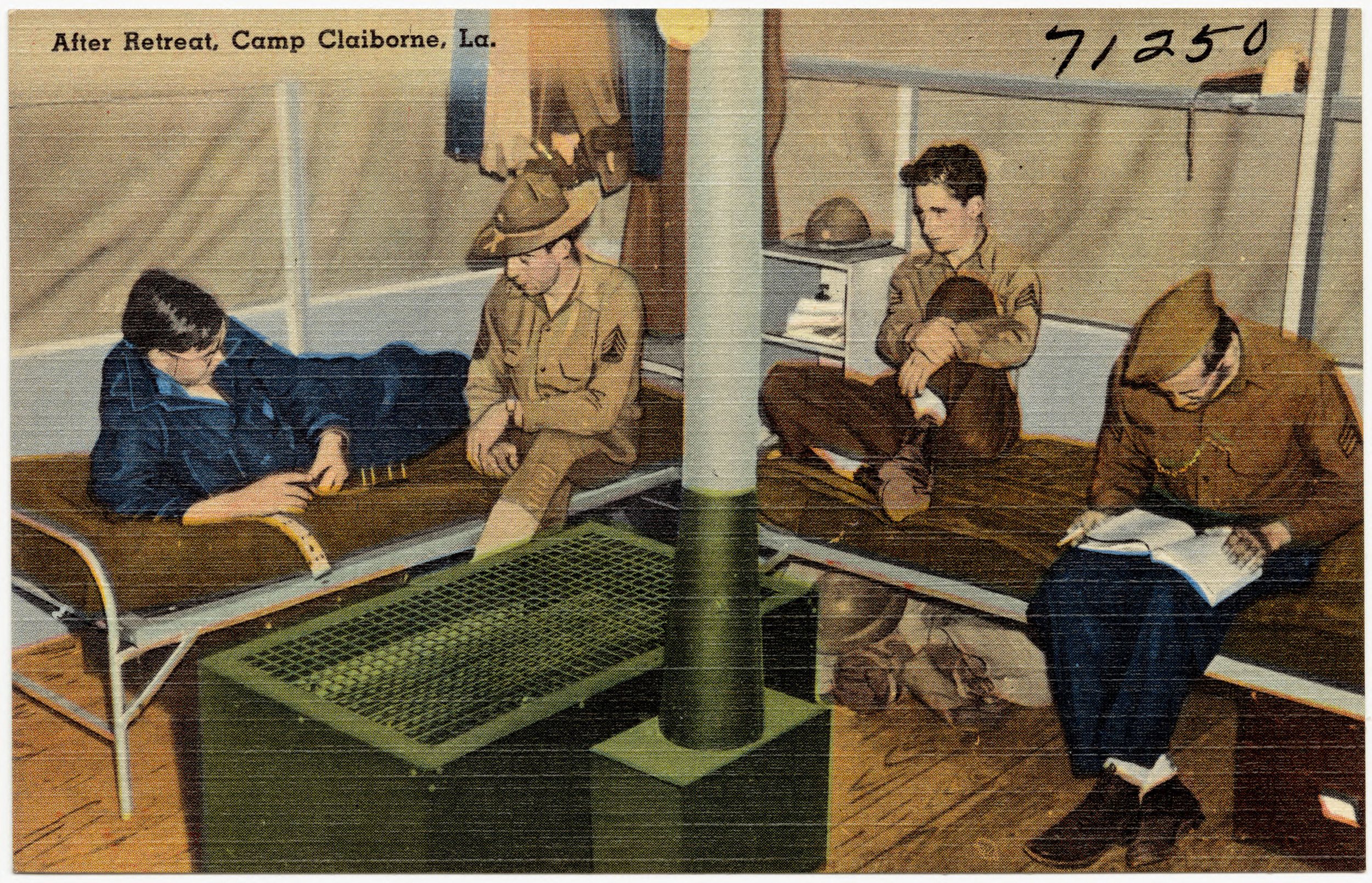
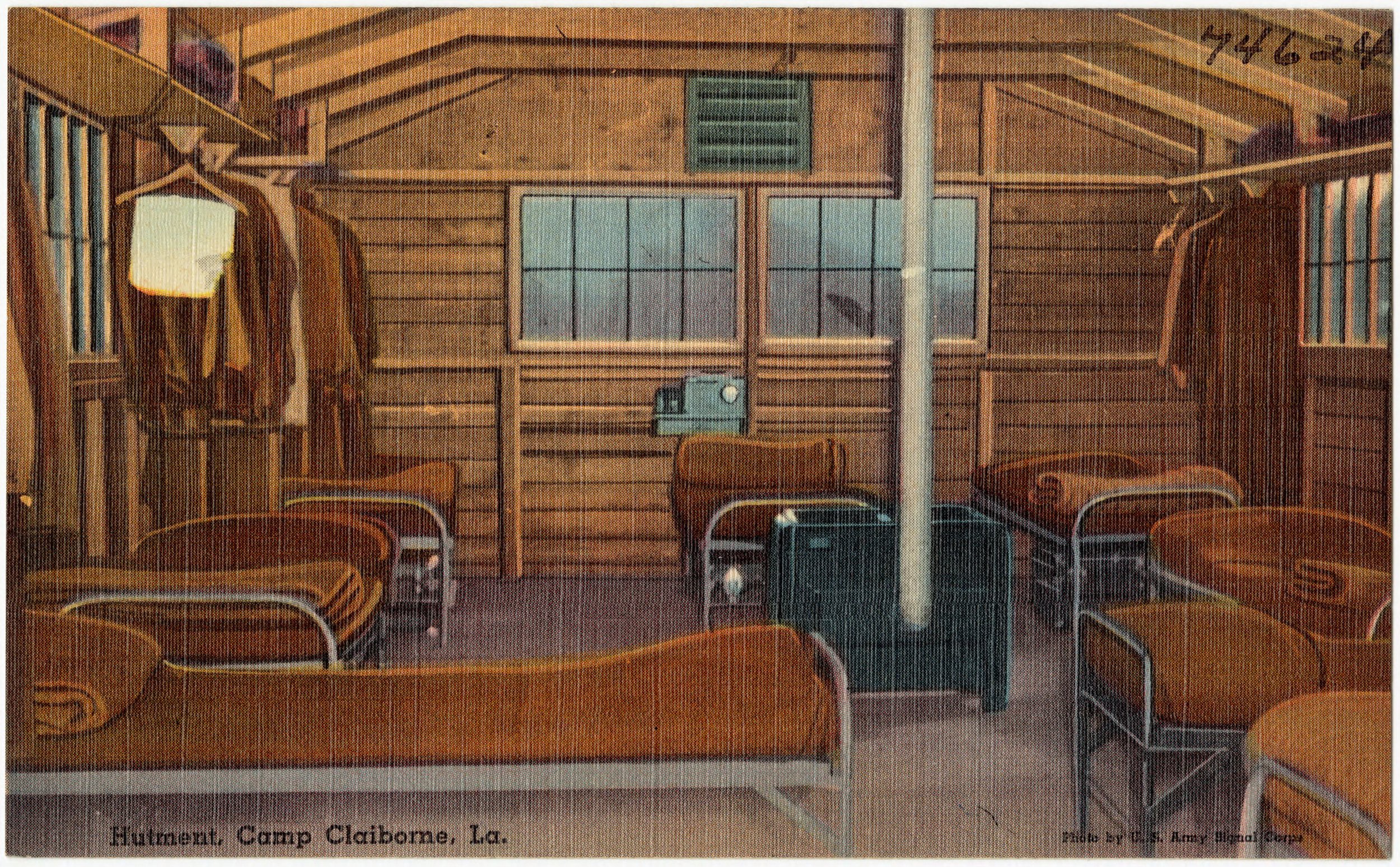
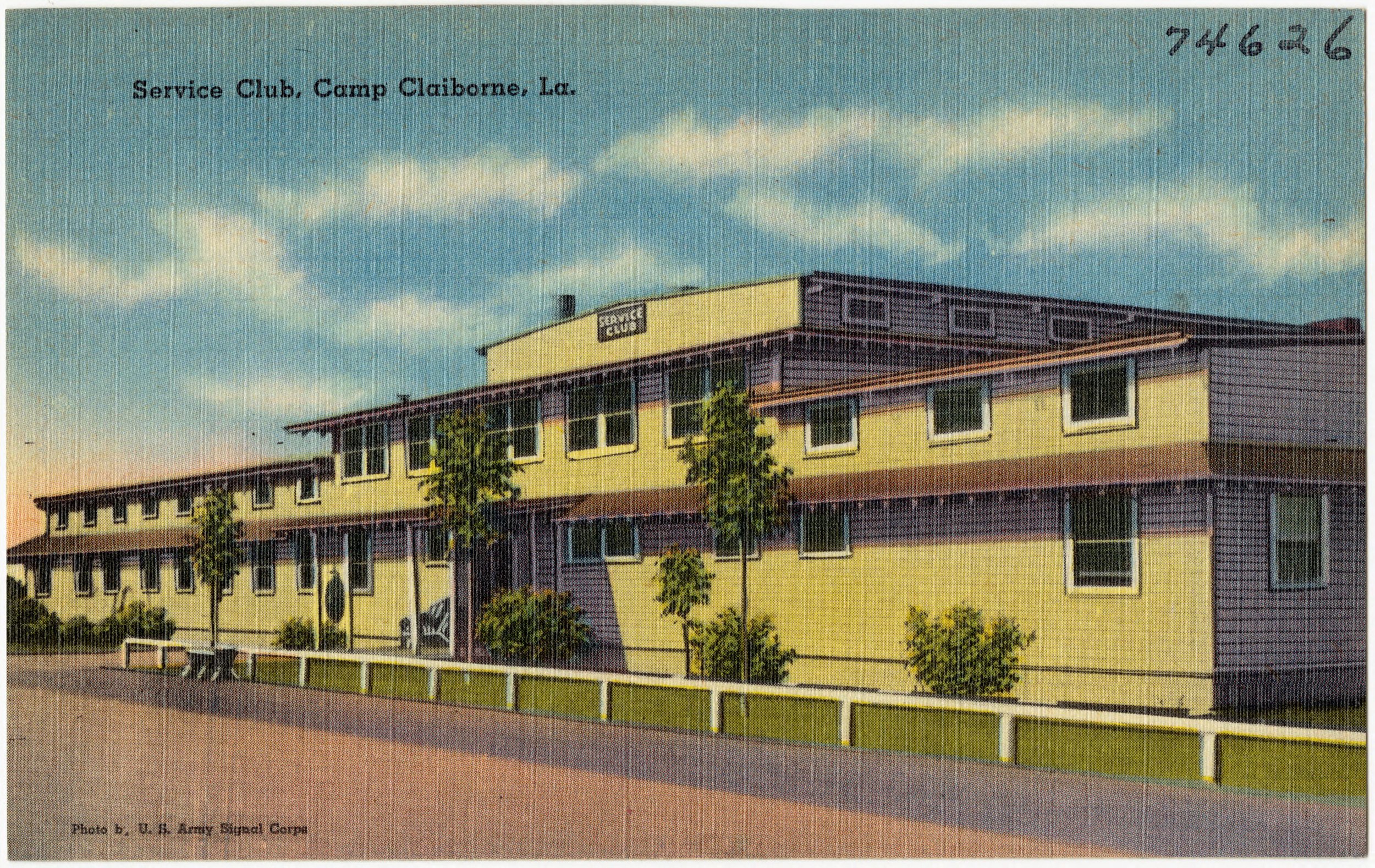
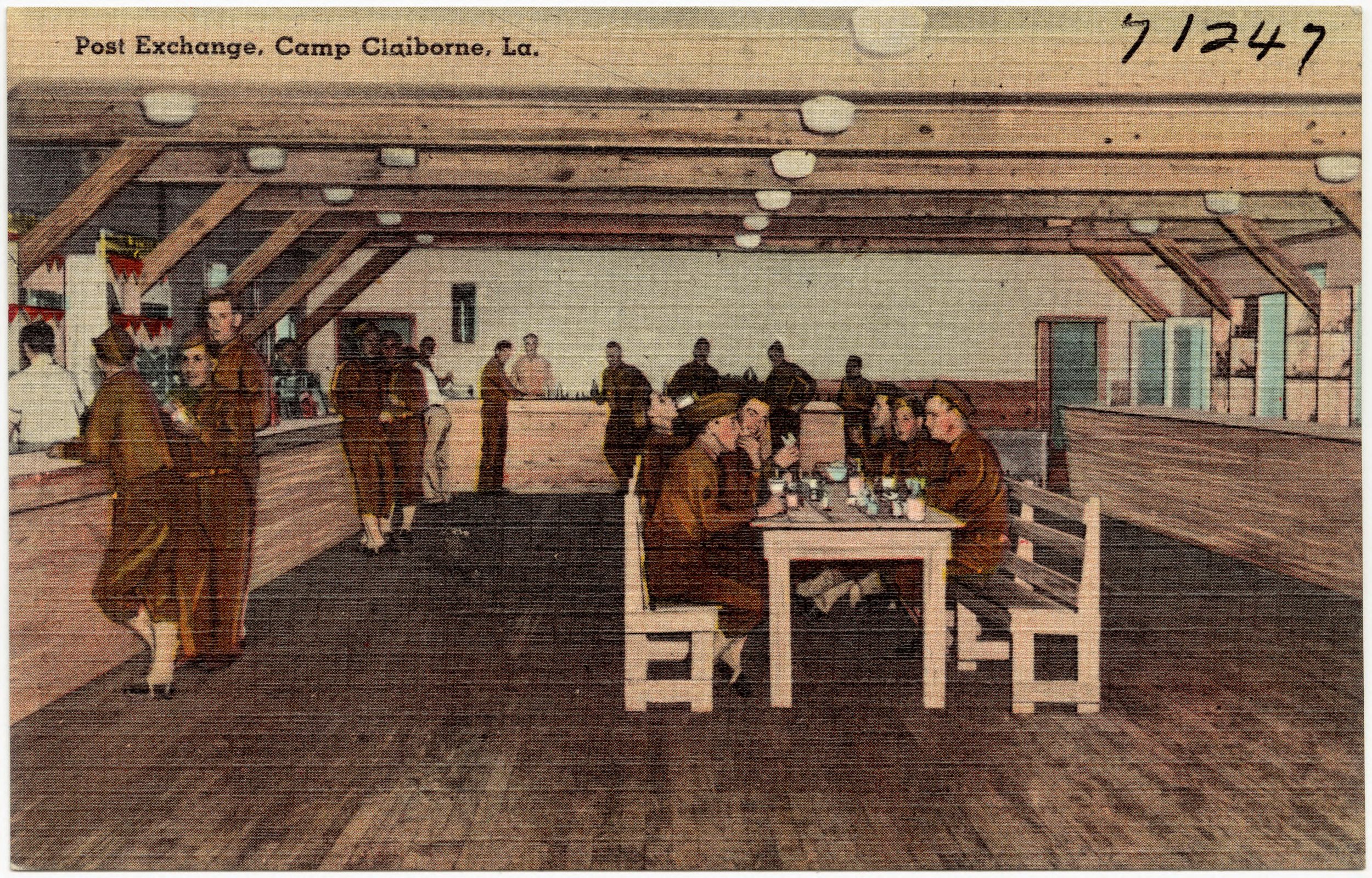


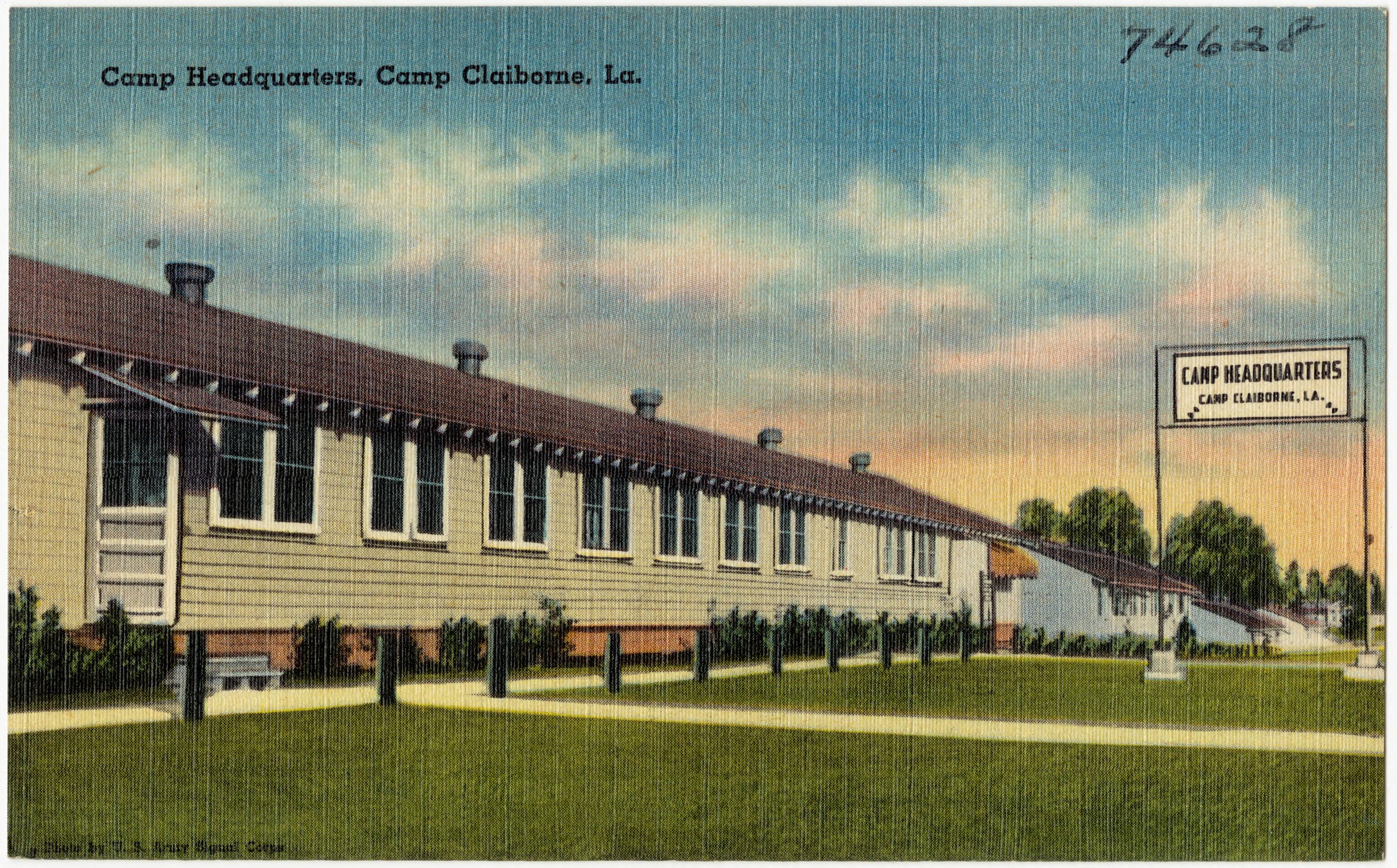

For more information about Camp Claiborne, see:
“Louisiana Spotlight: Camp Claiborne” at the National World War II Museum
“Camp Claiborne: History Center and Museum”
“Camp Claiborne” at Wikipedia
“Camp Claiborne, Louisiana World War II Army Camp”
“Remembering Camp Claiborne” at the Center for Regional Heritage Research at Stephen F. Austin State University
“A Camera Trip through Camp Claiborne” at Internet Archive
Photo Credits:
Header Image: Owen Campbell, Camp Claiborne Forest. From Camp Claiborne collection.
Body Text Images: Photos from “Cactus Caravan” Albert Love Enterprises, Atlanta Georgia, 1944, Special Collections at McCain University Library and Archives, the University of Southern Mississippi.
Postcard Gallery: All images, Digital Commonwealth, Massachusetts Collections Online, Boston Public Library, Tichnor Brothers Inc. Postcard Collection, https://www.digitalcommonwealth.org/collections/commonwealth:0p096w19r.
